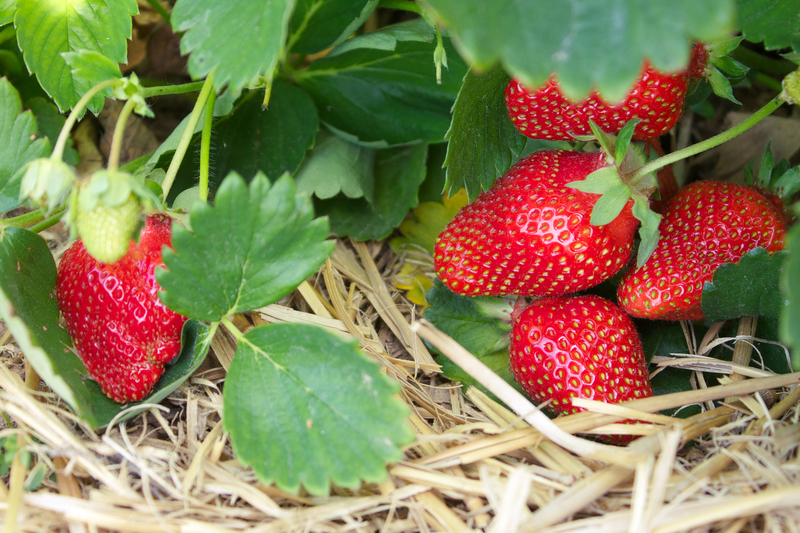A Homeowner's Guide to Getting Rid of Tree Stumps Efficiently
After cutting down a tree, many homeowners are left with an unsightly tree stump in their yard. Not only are these stumps visually unappealing, but they can also become home to pests, fungi, or even create hazards for lawn equipment and foot traffic. If you're searching for practical, easy, and effective tree stump removal methods, you're in the right place.
Why Remove Tree Stumps?
Many people wonder, "Is tree stump removal really necessary?" Here are a few compelling reasons to eliminate them:
- Safety Hazards: Tree stumps can cause tripping accidents for people and pets.
- Pest Attraction: Decaying stumps attract termites, ants, beetles, and other unwanted critters.
- Curb Appeal: Stumps generally make your yard look neglected and unkempt.
- Regrowth: Some types of trees may sprout new growth, turning one stump into a cluster of persistent shoots.
- Lawn Maintenance Difficulty: Mowing or landscaping becomes trickier and more hazardous with stumps in the way.

Main Methods for Getting Rid of Tree Stumps
There are several methods a homeowner can use for efficient tree stump removal. Each technique has its benefits, costs, and considerations.
Manual Tree Stump Removal
If you're physically fit and the stump is small, removing a stump by hand can be an affordable option. Here's how:
- Gather Tools: You will need a spade, mattock or grub hoe, ax, pruning saw, and a pair of gloves.
- Dig Around the Stump: Use the spade to remove the soil from around the base and roots.
- Cut and Expose the Roots: Use the saw, ax, or mattock to cut through main roots. Prune any small roots to free the stump.
- Pry and Remove: Once enough roots are cut, use leverage with your tool to work the stump loose and pull it out.
Note: Manual removal works best for smaller stumps or saplings. Large stumps with extensive root systems are extremely tough to remove without heavy equipment.
Chemical Stump Removal Techniques
A chemical stump remover can make the job less labor-intensive. Here's an overview of the process:
- Drill Holes: Use a large drill bit to make deep holes into the top and sides of the stump (6-12 inches deep).
- Apply Chemical: Pour stump remover powder, potassium nitrate, or Epsom salt into the holes.
- Add Water: Fill the holes with water to activate the crystals and speed up decomposition.
- Wait for Softening: Over 4-6 weeks, the stump will become spongy and easier to chip away.
- Remove: Use an ax, shovel, or mattock to break up the softened stump remnants.
Be sure to follow the instructions of the product you use. Chemicals are best for homeowners who can be patient and want lower physical effort.
Burning Out Tree Stumps
If permitted by local regulations, burning is another method for efficient stump elimination. Steps include:
- Prepare the Stump: Drill deep holes into the stump and fill them with kerosene or fuel oil (never use gasoline).
- Let Soak: Allow the fuel to penetrate the wood for a few days.
- Set Fire: Carefully ignite the stump, monitoring closely with a hose nearby for safety.
- Burn Out Remnants: Keep feeding the fire as the stump chars and eventually turns to ash.
- Dispose of Ashes: Shovel out the ashes and fill the hole with topsoil.
Important: Always check your local fire and environmental regulations before attempting this method. Supervise the burning process at all times.
Stump Grinding - The Fastest Professional Method
For quick and efficient tree stump removal, stump grinding is the top solution. A professional-grade stump grinder--a powerful machine with a rotating cutting disk--chews away the wood below ground level.
- Pros Can Finish in Minutes: Even large stumps can be ground down 6-12 inches below the soil surface in a matter of minutes.
- Minimal Lawn Damage: The process only affects the immediate area.
- Mulch Recycling: The ground wood chips can be used as mulch throughout your garden.
Most homeowners hire a professional stump removal service for this task, though stump grinder rentals are available for those comfortable with heavy equipment.
Choosing the Best Tree Stump Removal Method for Your Yard
Your ideal tree stump removal method depends on several key factors:
- Stump Size: Large stumps usually require grinding or professional help. Small stumps may be handled manually or chemically.
- Location: Stumps near structures or utilities may limit which removal methods are safe.
- Budget: Manual and chemical methods are budget-friendly. Stump grinding or professional removal costs more but saves time and effort.
- Timeframe: Chemical and natural methods take weeks or months. Grinding and burning are much faster.
- Personal Preference: Some homeowners prefer eco-friendly, low-impact techniques, while others prioritize speed and convenience.
Comparing Stump Removal Techniques
| Method | Pros | Cons | Best For |
|---|---|---|---|
| Manual Removal | Low cost, eco-friendly, good exercise | Labor-intensive, only practical for small stumps | Tiny/small stumps, DIYers |
| Chemical Removal | Low physical effort, affordable | Slow process, chemicals may affect soil | Low-budget projects, patient homeowners |
| Burning | Quick, reduces stump to ash | Fire hazard, local restrictions, messy | Stumps in isolated areas, few restrictions |
| Stump Grinding | Fast, effective for all sizes | Higher cost, equipment needed, noisy | Large or multiple stumps, quick results |
Natural Alternatives for Stump Removal
If you prefer non-chemical and environmentally friendly approaches, try these natural methods for tree stump decaying:
Composting the Stump
Speed up decomposition by keeping the stump moist and covering it with soil, compost, or mulch. Drill holes to increase exposure to fungi and bacteria, which naturally break down the wood over time.
- Cover the stump with organic materials (leaves, grass clippings, manure) to hold moisture and encourage decomposition.
- Keep the area damp and replenish mulch as needed.
- This process can take several months to a few years, depending on the stump size and tree species.
Tip: Planting mushroom spores (such as oyster mushrooms) on the stump accelerates the breakdown and offers edible fungi.
Epsom Salt Stump Removal
Epsom salt is a gentler alternative to harsh chemicals for stump removal. The high magnesium rate helps dry out the wood and kill any living roots. Here's how:
- Drill holes into the stump's surface and large roots.
- Fill the holes with Epsom salt and add water.
- Cover the stump with a tarp to keep rain out and retain the salts.
- Repeat monthly until the stump is soft enough to hack apart or naturally decays.
Tips for Speeding Up Tree Stump Removal
- Cut the Stump as Low as Possible: The less wood above ground, the easier and quicker removal becomes.
- Combine Methods: Some homeowners cut the stump low, apply Epsom salt or chemicals, and then burn or chip away weakened wood.
- Use a Mattock or Pickaxe: Tools designed for stubborn roots are invaluable in manual removal methods.
- Hire Professionals for Large Stumps: If the root system is massive or the stump is close to structures, calling the experts is safest and most efficient.
- Follow Safety Guidelines: Always wear protective gear, handle chemicals responsibly, and comply with local regulations.
When Should You Call a Professional?
There are situations when professional tree stump removal is the most efficient and safest choice:
- Huge Stumps: Stumps larger than 12 inches in diameter are usually best handled by stump grinders.
- Hard-to-Reach Locations: If a stump is near your home, fence, patio, or utility lines, experts can remove it with minimal risk.
- Lack of Time or Tools: Save yourself backbreaking work or expensive tool rentals.
- Quick Results: Stump grinding and professional techniques can clear stumps in hours rather than weeks or months.
Preventing Stump Problems in the Future
Don't let a simple tree removal create future headache for your landscaping. Consider these proactive steps:
- Request Stump Removal during tree felling and save on separate service calls later.
- Choose Proper Trees: Select species with less invasive or deep root systems for areas close to your home.
- Monitor for Regrowth: Remove shoots or suckers promptly if you notice new growth around the old stump.

Frequently Asked Questions About Tree Stump Removal
How much does tree stump removal cost?
Professional stump grinding typically costs between $100 and $400 per stump depending on size, location, and access. DIY methods cost much less, though they require more effort and time.
Can I rent a stump grinder as a homeowner?
Yes! Home improvement stores and equipment rental companies offer stump grinders for hourly, daily, or weekly rates (usually $100-$200 a day). Be sure to receive training and use proper safety equipment.
Will tree roots continue to grow after stump removal?
Once the stump and most roots are removed, growth generally stops. Some aggressive species may still send up shoots--monitor the area and remove regrowth promptly.
Are chemical stump removers safe for pets and children?
Most commercial products are formulated to target wood, but always read the package and keep pets and children away until the product has done its job and is safely cleared.
Conclusion: Take Control of Your Yard
Getting rid of tree stumps efficiently doesn't have to be a daunting task. By understanding your options--from manual digging and natural composting to stump grinding and chemical removal--you can choose the strategy that suits your needs, budget, and timeframe. With the right approach, you'll reclaim your landscape, boost curb appeal, and prevent future problems. For the largest or most troublesome tree stumps, don't hesitate to contact local stump removal professionals for safe, fast, and thorough results.
Now that you're equipped with this comprehensive homeowner's guide, efficient tree stump removal is just a plan away!